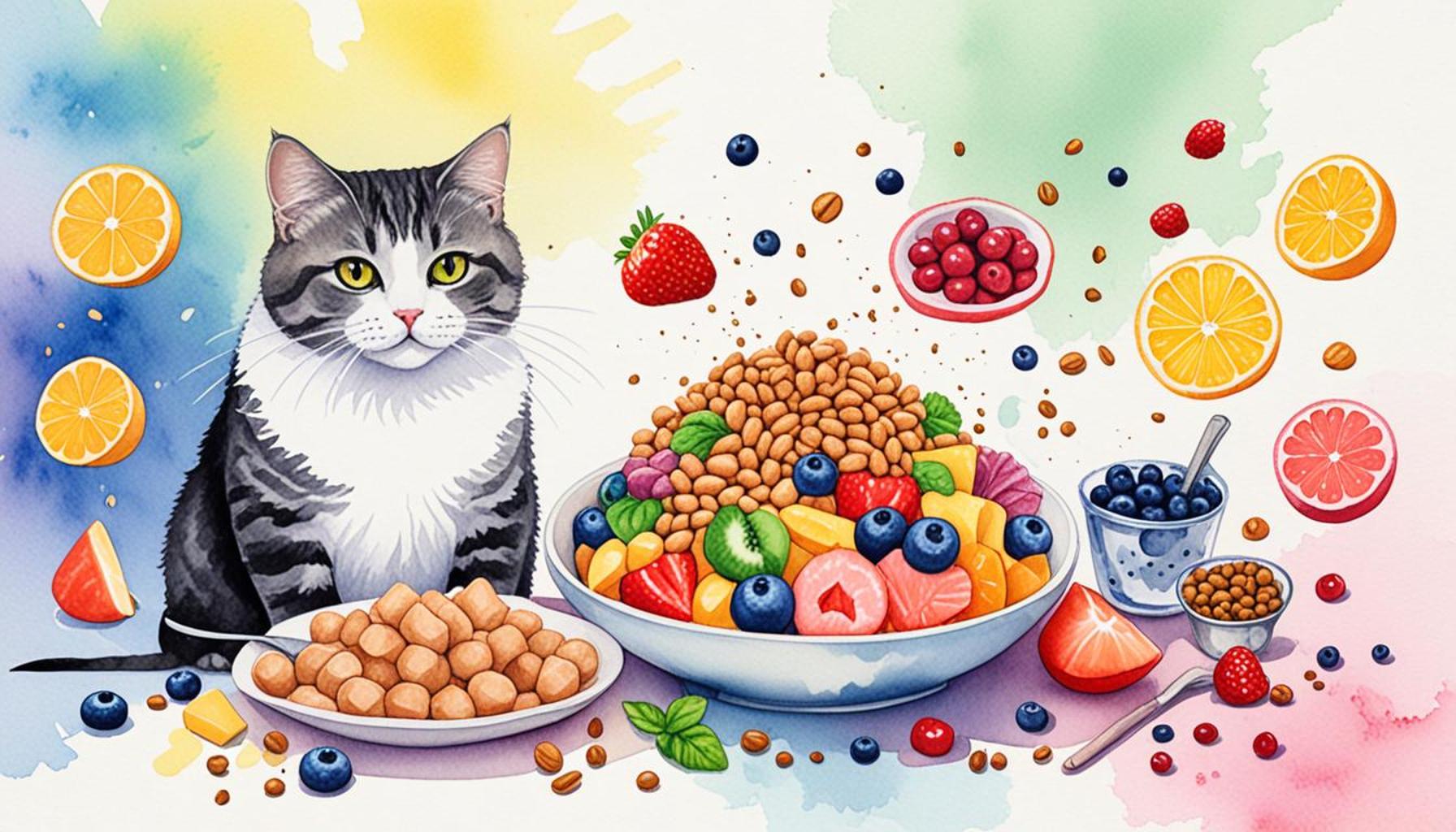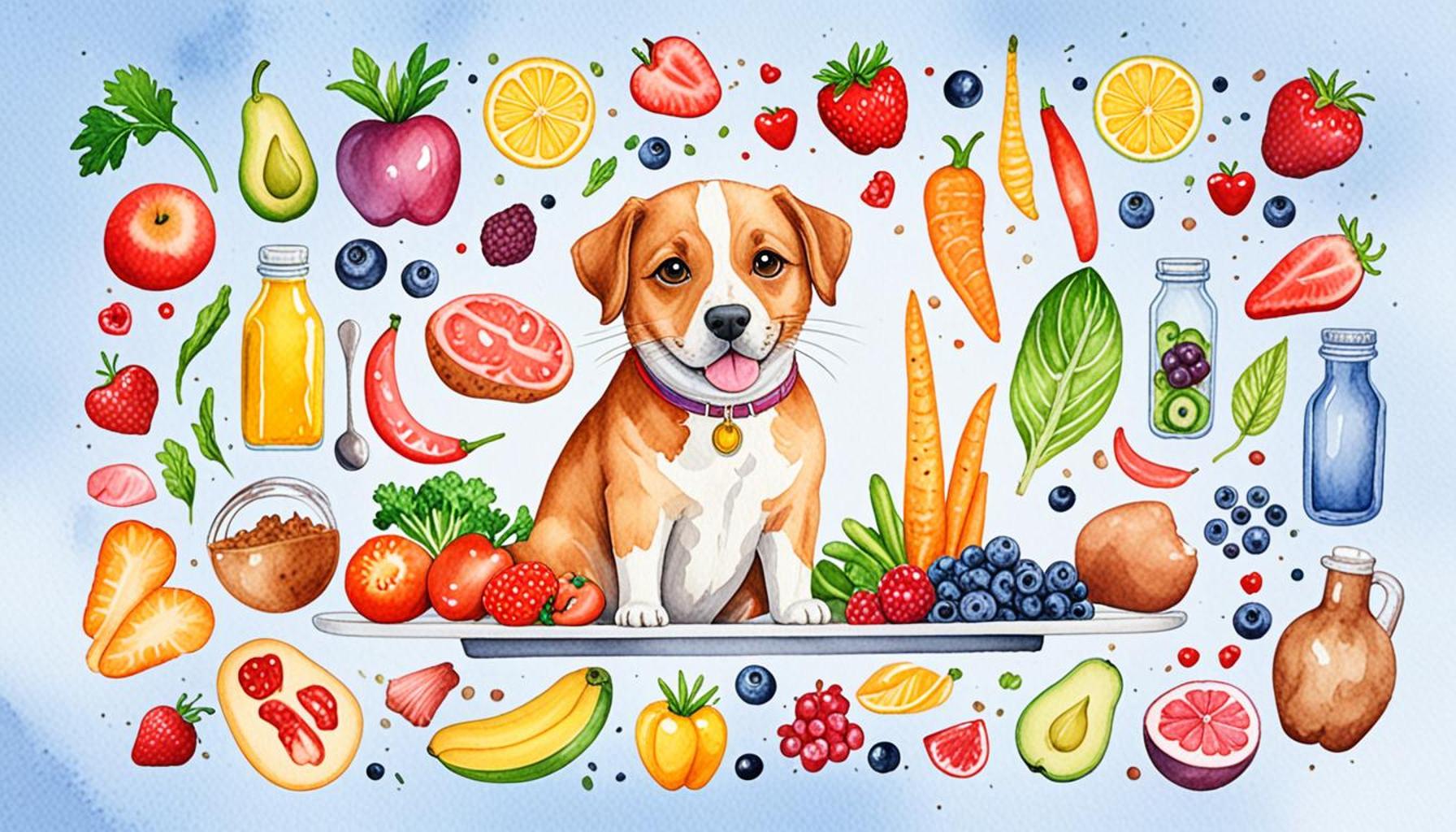Choosing Balanced Cat Food Tips for the Ideal Diet and Nutrition

As cat owners, we often find ourselves pondering over the right food choices for our furry companions. A balanced diet is vital for the overall health and well-being of cats, impacting their energy levels, coat health, and longevity. Understanding the nutritional needs of felines can be challenging, yet it is essential to make informed decisions when it comes to their meals.
With numerous options available on the market, how do we determine which cat food is the best fit? Factors such as ingredients, age, lifestyle, and specific dietary needs can influence the ideal selection for your cat. This article will guide you through practical tips for choosing the right cat food, and present our Top 5 cat food brands that prioritize a balanced diet.
By armoring yourself with the right knowledge and insights, you can ensure your cat receives the nutrition they deserve while enjoying every bite. Stay tuned to uncover valuable information that can make a significant difference in your pet’s health!
DISCOVER MORE: Click here to learn how to ensure a smooth ride with your dog
Top 5 Tips for Balanced Nutrition: How to Choose the Ideal Cat Food
Choosing the perfect cat food can feel like navigating a maze. With the grocery aisles brimming with colorful bags and enticing advertisements, it’s crucial to understand what constitutes a balanced diet for your feline friend. To cut through the clutter and zero in on the ideal diet, this article outlines the top five considerations you should keep in mind when selecting cat food. By doing so, you can ensure your cat stays healthy and happy.

5. Understanding Your Cat’s Nutritional Needs
The first step in selecting the right cat food is understanding your cat’s specific nutritional requirements. Unlike dogs and humans, cats are considered obligate carnivores. This means their dietary needs revolve primarily around consuming meat. History and evolution have shaped cats to derive vital nutrients from animal sources, making high-quality protein an essential part of their meals. Thus, when scanning the ingredients list on cat food packaging, look for high-quality protein sources such as chicken, turkey, or fish as the primary ingredient.
However, protein is not the only nutrient that cats need. A well-rounded diet should also include:
- Essential amino acids (like taurine) – This amino acid is critical for heart function, vision, and reproduction. Because cats cannot synthesize taurine in sufficient quantities, it must be included in their diet.
- Vitamins and minerals – Like calcium, phosphorus, and Vitamin E, these nutrients play roles ranging from bone health to immune system support.
- Fats – Providing energy and aiding in the maintenance of a shiny coat, fats are an important part of a cat’s diet.
Considering factors such as age, weight, and health conditions can help you tailor the diet more precisely. Kittens, adult cats, and senior cats all have varying nutritional needs, so consulting a veterinarian for personalized advice is encouraged. For instance, a growing kitten requires more protein and fat compared to an older cat that might need a diet lower in calories to prevent weight gain.
4. Choosing the Right Food Type
Cats, much like humans, have their own preferences when it comes to food textures and tastes. This can significantly influence their eating habits. The three main types of cat food to consider are dry kibble, wet canned food, and raw diets. Here’s a breakdown of each:
- Dry Kibble: Known for its convenience, dry kibble is easy to store and serve. It also helps in maintaining dental health by reducing plaque build-up. However, its lower moisture content requires that cats drink more water to stay hydrated, which can be a challenge for some felines.
- Wet Canned Food: With a higher moisture content, wet food is beneficial for hydration, especially for cats that don’t drink enough water. However, it can be less convenient due to the need for refrigeration once opened and tends to be more expensive than dry kibble.
- Raw Diet: Advocates of raw diets argue that they mimic a natural diet closely. However, raw food requires careful handling and preparation to avoid bacterial contamination, making it more labor-intensive.
Ultimately, the choice may come down to what your cat prefers, their health conditions, and your lifestyle. Mixing different types of food can provide variety and ensure your cat receives the benefits of each type.
3. Reading Labels and Ingredients
Reading the labels on cat food packaging is similar to scanning human food labels—essential but sometimes overlooked. Knowing how to interpret these labels can help you discern quality ingredients from fillers. Here are key elements to consider:
- AAFCO Statement: Ensure the food complies with standards set by the Association of American Feed Control Officials. Products containing an AAFCO statement confirm adequate levels of nutrients necessary for a specific life stage.
- Ingredient Quality: Look for whole meats rather than meat by-products. Whole meats ensure your cat is receiving high-quality protein. Additionally, avoid fillers such as corn and soy, which add bulking but limited nutritional value.
- Preservatives: Favor natural preservatives like Vitamin E and Vitamin C over artificial alternatives, which can sometimes cause adverse reactions.
Being informed about what goes into your cat’s food can prevent you from making poor dietary choices that could lead to health issues down the line.
2. Special Diets and Allergies
Cats, much like their human owners, can suffer from specific health conditions or allergies. Selecting the right food in these cases becomes even more critical to their overall well-being. Common sensitivities and health concerns include:
- Grain allergies: Some cats are sensitive to grains like wheat and may benefit from grain-free diets.
- Chicken or beef allergies: Cats exhibiting gastrointestinal distress due to these common proteins may require a novel protein source such as duck or venison.
- Specific digestive issues: Conditions like constipation or diarrhea require specialized diets that may include more fiber or easy-to-digest ingredients.
If you suspect that your cat has food allergies, consulting with a veterinarian is crucial. Many brands offer limited-ingredient diets specifically formulated for cats with allergies, making it easier for you to find the right option that will not compromise their health.
1. Consultation with a Veterinarian
Despite all the information and research available, the best course of action when selecting cat food remains a consultation with your veterinarian. Veterinarians provide invaluable insights tailored to your cat’s unique needs, ensuring that the food choice meets their dietary requirements while considering their age and health conditions. More profoundly, a veterinarian can guide you through any transition process if you decide to switch your cat’s food, offering advice on gradually introducing new items to prevent digestive upset.
Regular visits to the vet will also keep you well-informed on any adjustments needed as your cat ages or their health condition changes. This not only ensures a balanced diet but also contributes to a long and healthy life for your furry friend.
By keeping these five crucial points in mind, you can confidently choose the ideal cat food that aligns with your cat’s nutritional needs and preferences. Always staying proactive about your pet’s diet will lead to discoveries that evolve with their needs, truly making every meal a step toward a healthier future.
When it comes to selecting the perfect cat food, the variety of options on the market can be overwhelming. This section delves into crucial aspects of choosing the ideal diet for your feline friend, emphasizing the significance of proper nutrition for their growth and well-being.The first consideration is the specific nutritional requirements of cats. Unlike dogs, felines are obligate carnivores, meaning their diet must be primarily protein-based. Look for cat foods that list high-quality meat as the first ingredient, ensuring your cat receives the necessary amino acids for optimal health. Additionally, the presence of taurine, an essential amino acid, is crucial for heart function and vision in cats. Foods that highlight the inclusion of taurine are beneficial in supporting their overall vitality.Another key factor in cat nutrition is the balance of fats and carbohydrates. While some fat is vital for energy and healthy skin, it’s essential to avoid overloading on carbohydrates, which can lead to obesity and related health issues. Selecting a cat food with a low to moderate carbohydrate content helps maintain an appropriate weight and fosters better digestion. Always examine the ingredients list and opt for foods created with real, identifiable ingredients, steering clear of fillers like corn and soy.Moreover, the age and health status of your cat also play a paramount role in food selection. Kittens require different nutritional profiles compared to adults and seniors. Kitten formulas generally contain higher protein levels and essential nutrients for growth, while older cats may benefit from diets that include joint support supplements and easily digestible ingredients. Always consult with a veterinarian to understand the specific needs of your cat based on their life stage and health condition.In terms of feeding practices, it’s essential to establish a feeding routine that suits your cat’s lifestyle. Some individuals prefer free-feeding, allowing their cats to graze on food throughout the day, while others find scheduled meals work better to regulate intake. Whichever method you choose, ensuring your cat has access to fresh water at all times is critical for their hydration and digestion.It’s important to remember that transitioning to a new food should be done gradually to prevent gastrointestinal upset. Mixing small amounts of the new food with the current one over several days ensures a smoother change. Observe your cat for any adverse reactions or preferences to make the most suitable choices moving forward.As pet owners, understanding the labels and the science behind cat food can be a daunting task. Looking for industry certifications and consultative recommendations can provide insight into the quality of the food your cat consumes. Many reputable brands engage in feeding trials and publish their findings, showcasing their commitment to animal health and nutrition. In summary, by focusing on the specific dietary needs of your cat, understanding the vital ingredients, and maintaining a suitable feeding practice, you can contribute to your feline friend’s long-term health and happiness. An informed choice in cat food is one of the most significant decisions you can make for your beloved pet.
DON’T MISS: Click here for expert tips
Frequently Asked Questions: Balanced Diet for Cats
How can I determine if a cat food is balanced and nutritious?
Choosing the right cat food involves reading labels and understanding nutritional content. A balanced cat food should list meat or fish as the primary ingredient, as cats are obligate carnivores. Look for a food that meets the Association of American Feed Control Officials (AAFCO) standards, as it indicates the food provides complete nutrition. Essential nutrients like taurine, omega-3 fatty acids, and antioxidants are crucial for a cat’s health, helping support their heart, vision, and immune system.
Is it better to feed my cat wet or dry food?
Both wet and dry foods have their pros and cons. Wet food can be advantageous because it contains a high moisture content, which can help maintain proper hydration, especially in cats that don’t drink enough water. On the other hand, dry cat food may benefit dental health due to its crunchy texture and is generally more convenient in terms of storage and cost. Ideally, a combination of both can be used, based on your cat’s specific needs and preferences.
How often should I feed my cat, and in what quantity?
The feeding frequency and portion size largely depend on the cat’s age, weight, and activity level. It is usually recommended to feed adult cats once or twice a day. For kittens, more frequent meals are necessary due to their rapid growth and higher energy needs. Always check the feeding guidelines provided by the cat food manufacturer and consider consulting with a veterinarian to tailor to your cat’s specific needs, ensuring they receive a balanced and appropriate diet.
Are grain-free diets better for cats?
The trend towards grain-free diets in pets originates from concerns about allergies and intolerances. However, true grain allergies are rare in cats. While some cats might benefit from a grain-free diet due to specific health issues, grains can still be a valuable source of carbohydrates and energy for many cats. It is crucial to focus on the overall balance of nutrients rather than solely eliminating grains. Consult with a veterinarian before making any significant dietary changes.
DISCOVER MORE: Click here to learn how to create a cozy play space for your feline friend
Conclusion: The Essence of a Balanced Diet for Cats
In conclusion, ensuring that your feline friend receives a well-balanced diet is essential for their health and well-being. Choosing the ideal cat food requires careful consideration of various factors that significantly impact your pet’s quality of life. An optimal diet not only supports their physical health but also enhances their mood, energy levels, and overall happiness.
Key Takeaways
- Nutritional Balance: A cat’s diet must be rich in proteins while maintaining essential nutrients like vitamins, minerals, and taurine to meet their specific dietary needs.
- Life Stage Appropriateness: It is crucial to select food that aligns with your cat’s life stage, be it kitten, adult, or senior, to ensure their nutritional requirements are met appropriately.
- Health Considerations: Address any health issues or special dietary needs by choosing formulations that cater to specific conditions like urinary health or weight management.
- Brand Reliability: Opting for reputable brands with proven quality and transparency can prevent potential complications arising from poor-quality ingredients.
- Consultation with Veterinarians: Regular consultations with veterinary professionals play a vital role in tailoring a diet that best fits your cat’s individual health profile.
The importance of a balanced diet for cats cannot be overstated. It demands informed decisions and a proactive approach toward understanding the nuances of their dietary needs. By focusing on these critical aspects, pet owners can cultivate a healthy and thriving environment for their felines, enhancing their longevity and quality of life. Ultimately, continued exploration into the field of feline nutrition will offer new insights and solutions, further refining the path to an ideal diet for our beloved companions.



